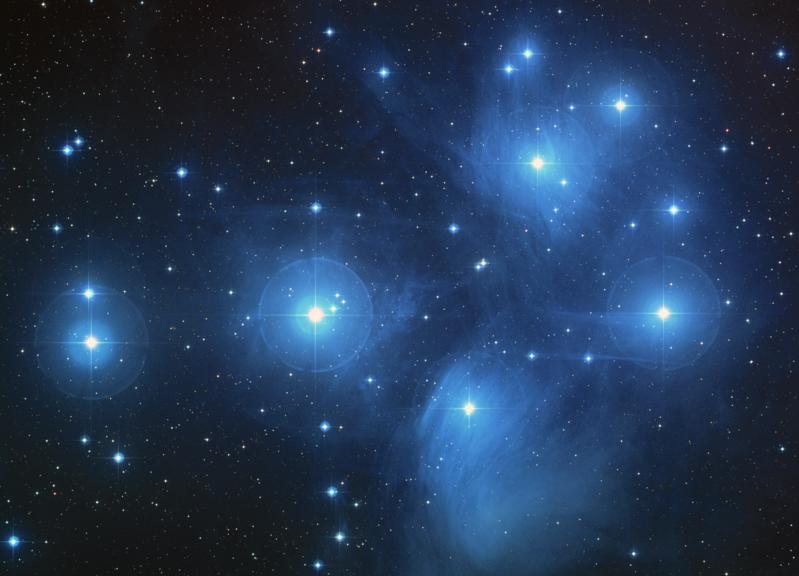As we start December the planets have had their turn and now is the time, not only for the bright constellations of the eastern skies, but for the Galaxies of the deep sky to feature, especially the 3 you can see with the naked eye, the Large and small Magellanic clouds (galaxies) in the south and Andromeda in the north. And beyond that into deep space for showpiece Galaxies like NGC1365 an iconic Bared Spiral that I was delighted to show to guests on our last Astronomy tour.
We now get to see some of our favourite and most familiar constellations return to the evening sky. One of the sparkling jewels of this group first seen in the east is the delightful Pleiades star cluster. Best seen in a large pair of binoculars or at low Magnification through a good quality refracting Telescope, this young (circa 100 million y.o) star cluster features in the mythology of many cultures from antiquity to the present day. Usually depicted as Seven beautiful sisters running across the sky to escape the unwanted and infatuated attention of a man ! Orion is usually the culprit, but we will talk more about him soon. Commonly called the seven sisters, it takes a keen Eye and a dark sky to see more than 6 of the 1000+ stars in this cluster that is nearby at just 400 or so light years away.
Following the Seven sisters into the sky is the heart of the constellation where they reside, Taurus. The head of the Bull, known as the bright and obvious Triangle of the “Hyades” features the massive red giant star Aldebaran or the Eye of the bull. When we look at this star we see a Red Giant that is 40 times bigger than our sun & closer than the seven sisters at just 60 light years away.
Close behind the the bull (and hunting him) is our afore mentioned & infatuated hunter/god, Orion. Next to the southern cross Orion is the best know constellation thanks to the “Asterism” of the Saucepan! The handle of that saucepan is Orion’s Sword & the middle star of that Sword is the stunning Orion Nebula, one of the biggest in apparent size and brightness. So much so that even binoculars will reveal otherwise hidden details.
As mentioned earlier The planets have had their turn as they are mostly absent from our evening sky, except for the bright and obvious Venus in the west & the ever shrinking mars, high above Sagittarius. If you are an early riser however, Jupiter is now bright and clear in the more stable air of the morning sky.
The Geminids Meteor shower is usually the highlight in December on the 13-14 with over 120 meteors per hour, however this year it will be interfered with by the bright full moon.
We are coming into the build up and I think we all hope a good wet season (our forests & wildlife sure need it). So At NightSkySecrets we wrap up our tours for the year to return again in April when we hope the skies are clear and the land is green.
To Keep up with all the latest in the Night Sky in 2017, Astronomy 2017 is now available from NightSkySecrets.


